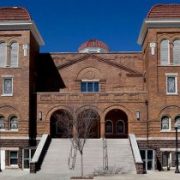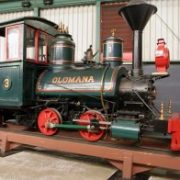Kudos Affiliates! March 2017 edition
Congrats to these Affiliates on their recent accomplishments.
FUNDING
The Railroad Museum of Pennsylvania (Strasburg, PA) has met a $50,000 matching grant challenge by the Pennsylvania Railroad Technical & Historical Society, with funds designated for the preservation of five historic Pennsylvania Railroad steam locomotives.
The National Park Service (NPS) announced funding for 39 projects in over 20 states that will preserve and highlight the sites and stories associated with the Civil Rights Movement and the African American experience, including the following Affiliate organizations:
- Ohio History Connection (Columbus, OH) $50,000
20th Century African American Civil Rights Movement in Ohio: Evaluating and Nominating Historic Properties - Rhode Island Historical Society (Providence, RI) $49,557
African-American Struggle for Civil Rights in Rhode Island: The 20th Century - Birmingham Civil Rights Institute (Birmingham, AL) $47,000
Preserving History, Building Community” project. This project will focus on the A.G. Gaston Motel as a case study for preservationists and the community to work in partnership to preserve and revitalize a historic civil rights site.
Lowell National Historical Park (Lowell, MA) in partnership with Lowell Community Health Center, Cambodian Mutual Assistance Association, City of Lowell Senior Center, Lowell Middlesex Academy Charter School, and YWCA of Lowell has been selected to receive a 2017 Active Trails grant from the National Park Foundation, the official charity of America’s national parks. The Discover Lowell’s Urban Trails initiative will offer new outdoor recreational programming to Lowell’s canalway trails and will be targeted toward non-users in adjacent neighborhoods.
The Kenosha Community Foundation has awarded 26 grants totaling over $51,000 to 22 non-profit organizations and projects serving Kenosha County residents including funding to the Kenosha Public Museum Foundation (Kenosha, WI) to support its upcoming “Re-Riding History: From the Southern Plains to Matanzas Bay” exhibit, which features how contemporary art retraces the historical experiences of American Indian communities.
Former cable TV mogul John Sie and his wife Anna have donated $12 million for the construction of a new welcome center at the Denver Art Museum (Denver, CO). The new welcome center is part of the museum’s plans to renovate the North Building. When it’s completed, the new welcome center will include a restaurant, café, ticketing and orientation space, event space, underground art storage and the museum’s conservation lab.

16th Street Baptist Church near the Birmingham Civil Rights Institute, part of a new Civil Rights National Monument in Alabama
AWARDS AND RECOGNITION
The Durham Museum (Omaha, NE) housed in Omaha’s Union Station was designated as one of 24 new National Historic Landmarks by the Department of Interior.
Birmingham Civil Rights Institute (Birmingham, AL) was recently designated by Former President Barack Obama as part of a new Birmingham Civil Rights National Monument. Along with BCRI, other sites designated as the monument include the A. G. Gaston Motel, 16th Street Baptist Church, Kelly Ingram Park, and Bethel Baptist Church.
The Hawaii State House of Representatives presented Kona Historical Society (Kona, HI) with a certificate of honor on its 40th anniversary for efforts to preserve local history and share Kona’s culture with residents and visitors.
California African American Museum (Los Angeles, CA) deputy director Naima J. Keith has been named the winner of the High Museum of Art’s David C. Driskell Prize, which is awarded annually to a scholar or artist who has made a major contribution to African American art history.
Congratulations all!






